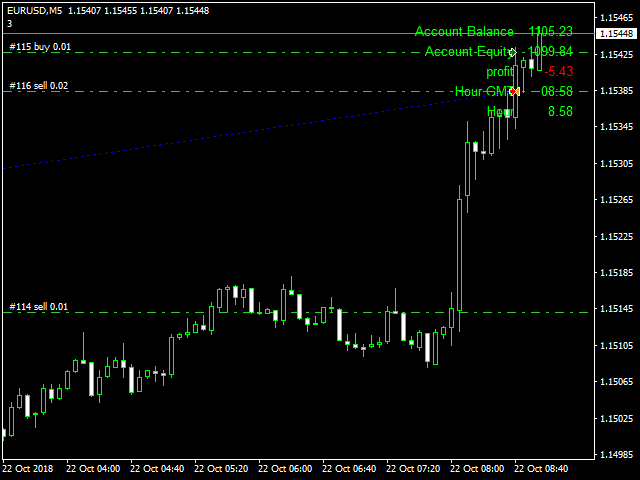Introduction:

Image: www.mql5.com
In the ever-evolving landscape of foreign exchange (forex) trading, effective risk management strategies are paramount to safeguard capital and enhance profitability. Hedging strategies, coupled with the automation prowess of Expert Advisors (EAs), can provide traders with a powerful toolkit for navigating market volatility and minimizing potential losses. This article delves into the intricacies of hedging and EAs in forex, empowering traders with the knowledge and tools necessary to implement these strategies effectively.
Hedging Strategies: Understanding the Basics
Hedging involves engaging in simultaneous transactions with opposing positions to offset potential risks. Forex traders employ hedging strategies to mitigate losses incurred from unfavorable market movements. By taking opposing positions in correlated or inversely correlated currency pairs, traders aim to balance out potential gains and losses. Common hedging techniques include:
- Hedging with Counter-Currency Pairs: Purchasing the base and selling the quote currency of a currency pair to offset each other’s fluctuations.
- Cross-Currency Hedging: Trading pairs involving different base currencies to minimize risk when the base currency is correlated.
- Correlation Hedging: Capitalizing on the correlation between two currency pairs to create a hedging position that benefits from market movements in either direction.
Expert Advisors (EAs): Automating Hedging Strategies
Expert Advisors (EAs) are automated trading programs that execute trades based on pre-defined parameters. They can be programmed to implement hedging strategies, providing benefits such as:
- Automation: EAs remove the need for manual execution of hedging transactions, reducing delays and improving accuracy.
- Discipline: EAs ensure hedging strategies are followed consistently, eliminating emotional influences that can hinder decision-making.
- Backtesting: EAs allow traders to test and optimize hedging strategies over historical data, providing insights into potential performance.
Selecting the Right EA for Hedging
Choosing the right EA for hedging strategies is essential. Consider the following factors:
- Strategy Compatibility: Ensure the EA aligns with your specific hedging approach and risk tolerance.
- Customization Options: Select an EA that allows for parameters customization to match your trading preferences and adjust to changing market dynamics.
- Performance History: Review the EA’s historical performance data to assess its effectiveness and potential profitability.
- Support and Updates: Verify the availability of ongoing support and updates from the EA developer to ensure its reliability and adaptability to market changes.
Implementing Hedging EAs in Forex Trading
To implement hedging EAs effectively, follow these steps:
- Define Your Hedging Strategy: Determine the specific hedging approach you will employ and the parameters for EA execution, such as entry and exit points.
- Configure the EA: Set the EA parameters in accordance with your hedging strategy, including risk management settings.
- Monitor and Adjust: Regularly review the performance of your hedging EA and make necessary adjustments as market conditions evolve.
Advantages and Considerations of Hedging and EAs
Hedging strategies and EAs offer several advantages:
- Reduced Risk: By offsetting potential losses, hedging reduces overall exposure to market risk.
- Enhanced Profitability: Hedging can improve profitability by protecting gains and preventing excessive losses.
- Diversification: Hedging diversifies a trading portfolio by introducing exposure to different currency pairs and market conditions.
However, it’s crucial to note that hedging is not risk-free and comes with certain considerations:
- Transaction Costs: Hedging involves additional transactions, which can incur trading costs that may reduce potential gains.
- Complexity: Hedging strategies and EAs can be complex, requiring a thorough understanding of forex markets and risk management techniques.
- Market Correlation: The effectiveness of hedging relies on the correlation between the hedged currency pairs, which may not always remain consistent.
Conclusion:
Hedging and EAs serve as powerful tools in the forex trader’s arsenal, providing effective risk management capabilities and enhanced profitability potential. By leveraging these techniques, traders can mitigate market risks, navigate market volatility, and improve their trading strategies. However, it’s essential to approach hedging and EAs with knowledge, careful planning, and ongoing monitoring to optimize their benefits and minimize potential drawbacks. Embracing these strategies can empower traders to navigate the forex markets with greater confidence and resilience.

Image: taniforex.com
Forex Ea Hedging Ea All Options






